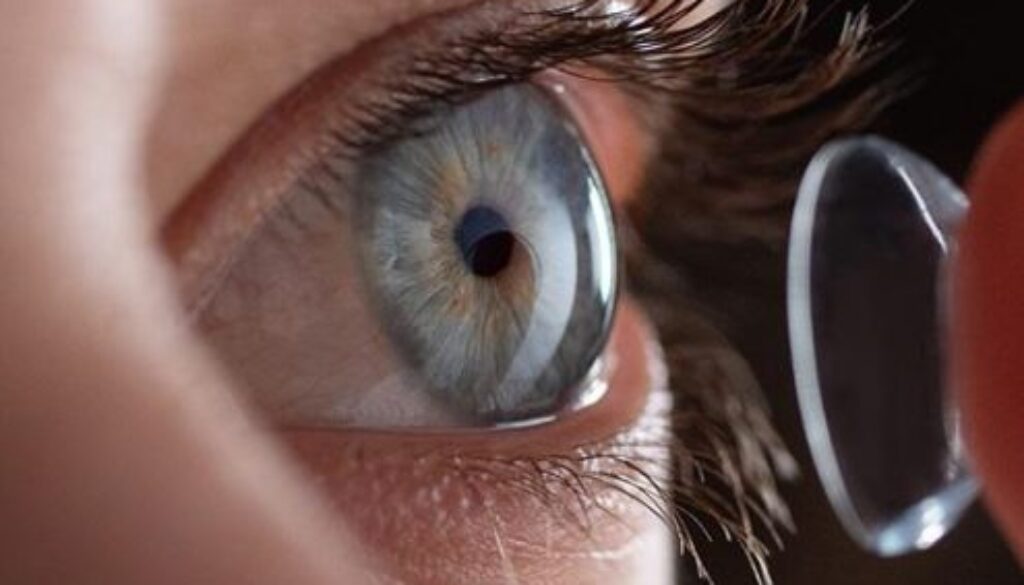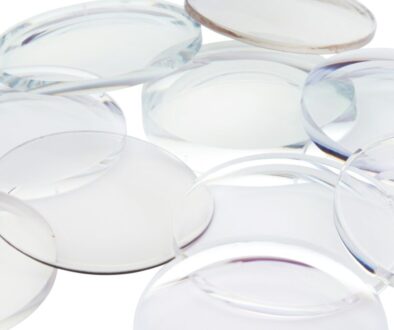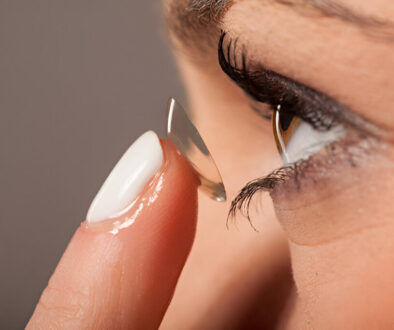Can ANYONE wear contact lenses?
From astigmatism to presbyopia, contact lenses now cater to nearly everyone. Explore types, benefits, and options—including specialty lenses for kids and complex needs—in this comprehensive guide.
Have you ever wondered if you’re a candidate for contact lenses? With advancements in eye care technology, almost anyone can find a lens that suits their needs. Whether you have astigmatism, presbyopia, or simply want freedom from glasses, this guide will explore your options. Below, we’ll discuss the types of contact lenses, who can wear them, and the benefits they offer for a wide range of needs.
Key Takeaways
-
Broad Accessibility: Contact lenses now address astigmatism, presbyopia, and even pediatric needs (ages 4+), with options for nearly all vision conditions.
-
Diverse Types: Includes soft lenses (daily, bi-weekly, monthly), specialty lenses (gas permeable, hybrid, scleral), Ortho-k (overnight reshaping), and FDA-approved myopia management for children.
-
Enhanced Benefits: Clearer vision than glasses in some cases, active lifestyle compatibility (sports, swimming), and freedom from fogging/slipping in humid climates.
-
Safety First: Strict hygiene, avoiding tap water, adhering to replacement schedules, and using preservative-free drops to prevent infections/dryness.
-
Tailored Fitting Process: Involves exams, lifestyle-based lens selection, trial periods, training, and follow-ups for optimal fit and comfort.
-
Age-Specific Solutions:
-
Kids: Myopia control and injury-resistant options.
-
Adults: Multifocal/toric lenses for presbyopia/astigmatism.
-
Seniors: Scleral lenses for dry eyes, easy-handling UV-protected lenses.
-
-
Specialty Innovations: Ortho-k for daytime clarity without lenses; scleral lenses for irregular corneas (e.g., keratoconus).
-
Professional Care: Regular check-ups and expert fittings ensure safety and adaptability to prescription changes.
-
Lifestyle Freedom: Ideal for sports, outdoor activities, and cosmetic flexibility with colored lenses.
Who Can Wear Contact Lenses?
The truth is, anyone who is interested in wearing contact lenses can likely find an option that works for them. Years ago, doctors may have told patients with astigmatism or presbyopia (the need for reading glasses) that contacts weren’t an option for them. Nowadays, there are many options for patients, and our doctors are experienced at fitting all of these contact lens modalities. We even fit children as young as 4 years old in contact lenses, with parent cooperation, of course.
Soft Contact Lenses: Versatile and Comfortable
These lenses are commonly used for average prescriptions but in recent years have expanded to incorporate high myopic (minus) and hyperopic (plus) prescriptions as well as increasing options for patients with astigmatism.
- Monthly soft contact lenses: these lenses are taken out daily and thrown away at and end of the month.
- Bi-weekly soft contact lenses: these lenses are taken out daily and thrown away every 2 weeks.
- Daily soft contact lenses: these lenses are thrown out at the end of 1 day. The next day a new lens is worn.
These lenses can also incorporate astigmatism and provide multifocal correction for clear distance and reading vision.
Specialty Contact Lenses: Advanced Solutions for Complex Needs
This area of eye care has made it possible for a much wider range of patients to wear contact lenses and sometimes provide clearer vision than glasses.
- Gas Permeable Contact lenses: these rigid lenses allow for better optical quality and wider ranges of prescriptions and better fits on irregular corneas
- Specialty Hybrid Contact lenses: with a rigid gas permeable lens in the center surrounded by a soft contact lens skirt, these lenses provide the same benefits as gas permeable lenses with improved comfort.
- Scleral lenses: these lenses are widely used for conditions like keratoconus and allow for a large range of corneal irregularities and high or irregular prescriptions while providing great optical quality.
- Orthokeratology (Ortho-k) lenses: these are overnight reshaping lenses which gently mould the cornea to actually change the prescription and allow for clear vision throughout the day without the use of contacts or glasses.
- Myopia Management contacts: these lenses are used in children to slow the progression of myopia (nearsightedness) while providing clear vision. They are now FDA approved to slow myopia.

Contact Lenses for Children
We can fit children as young as four years old with contact lenses, making them an excellent option for managing myopia or providing freedom from glasses for active lifestyles. Myopia management lenses are particularly beneficial in slowing nearsightedness progression in kids, ensuring healthier vision for the future.
Considerations and Risks: Safe Contact Lens Practices
While contact lenses offer freedom and flexibility, proper care is essential to avoid complications like infections or dry eyes. At Westbrowardeye in Tamarac, our eye care specialists emphasize these key practices for safe wear in South Florida’s humid climate:
-
Hygiene First: Always wash hands with soap before handling lenses. Avoid using tap water (common in Tamarac’s hard water areas) to rinse lenses.
-
Follow Replacement Schedules: Overwearing monthly/bi-weekly lenses raises infection risks. Dailies are ideal for allergy-prone patients in Broward County.
-
Avoid Sleeping in Lenses (unless prescribed): Reduces corneal hypoxia risk.
-
Stay Ahead of Dry Eyes: Tamarac’s heat and AC use can worsen dryness. Use preservative-free rewetting drops recommended by our optometrists.
-
Attend Follow-Ups: Annual exams at our Tamarac clinic ensure lenses fit properly as prescriptions change.
The Contact Lens Fitting Process
Getting contacts in Tamarac isn’t a one-size-fits-all process. Here’s what to expect during a fitting at our Tamarac clinic:
-
Comprehensive Eye Exam: We assess corneal shape, tear film quality, and prescription strength using advanced digital mapping technology.
-
Lens Selection: Based on your lifestyle (e.g., outdoor activities in Cypress Park or screen-heavy work), we’ll recommend dailies, sclerals, or myopia management lenses.
-
Trial Period: Test lenses for comfort and clarity. Patients often need adjustments for astigmatism or presbyopia.
-
Training Session: Learn insertion/removal techniques (even kids master it quickly!).
-
Follow-Up: We schedule a 1-week check to ensure no irritation—critical for first-time wearers in South Florida’s dusty, pollen-heavy seasons.
Lifestyle Benefits: Enjoy Tamarac’s Active Scene with Contacts
Ditch the glasses and embrace Broward County’s vibrant lifestyle:
-
Sports & Fitness: Contacts stay secure during soccer at Tamarac Sports Complex or swimming at local pools. No fogging or slipping!
-
Outdoor Adventures: Perfect for hiking at nearby Everglades or beach days—pair with non-prescription sunglasses for UV protection.
-
Comfort in Humidity: Unlike glasses, contacts won’t slide down your nose in Tamarac’s summer heat.
-
Cosmetic Freedom: Try colored lenses for special events at Tamarac’s Community Center or go makeup-free without bulky frames.
Age and Contacts: Solutions for Every Stage of Life
Kids (4+):
-
Myopia management lenses slow nearsightedness progression, crucial for school-age children in Broward County’s screen-heavy classrooms.
-
Sports-safe options reduce injury risks during soccer or ballet.
Adults:
-
Multifocal lenses tackle presbyopia, ideal for Tamarac professionals juggling screens and paperwork.
-
Toric lenses correct astigmatism for clear driving vision on busy roads like Commercial Blvd.
Seniors:
-
Scleral lenses relieve dry eyes (common with aging) by retaining moisture, great for Tamarac’s retirees.
-
Easy-to-handle monthly lenses with UV protection for golfing or gardening.
Why Choose Us? West Broward Eyecare Associates serves generations of Tamarac families, offering age-specific solutions backed by 15+ years of local expertise.
Curious about how orthokeratology lenses work? Learn more about Ortho-k here. Looking for myopia management solutions for your child? Explore our myopia management services here.
Contact lenses have evolved to suit a variety of needs, making them accessible to nearly everyone.
If you are interested in trying contact lenses or want to learn more, call our office at 954-726-0204 or book an appointment online!
FAQs
-
Almost anyone can wear contact lenses, including children as young as 4 years old, individuals with astigmatism, presbyopia, or high prescriptions. Advanced options like specialty lenses make contacts accessible for nearly everyone.





